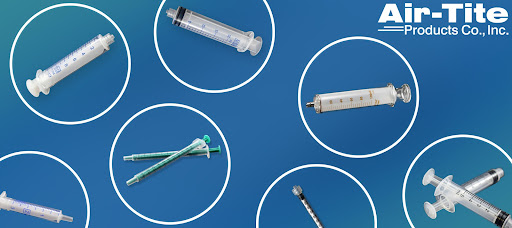
German surgical instrument maker Hermann Luer invented Luer Lock and Luer Slip syringes in the late 1800s. He designed them to provide a leak-free connection between needles and syringes while maintaining a continuous fluid flow lumen.
A few key differences between these two popular syringe designs make them ideal for specific uses. Read on to learn more about Luer Lock vs. Luer Slip syringes and find out which one is right for your application.
At the tip of a Luer Lock syringe, you’ll find an internal thread where the needle attaches in a screw-like fashion. Turning the needle clockwise locks it in place. Turning counterclockwise allows it to detach.
The advantage of a Luer Lock design is that it creates a more secure attachment. This allows for the connection to sustain higher pressures with a reduced risk of leaks or pop-off. There are instances when a Luer Lock attachment may be the only compatible attachment to a component of a device.
Luer Slip syringes use a friction-fit connection method. A needle’s hub is pushed onto the syringe tip in a twisting motion for a tight fit.
A Luer Slip design allows for a needle to be conveniently attached more quickly. The extent of the twisting motion used to fasten a needle to a Luer Lock syringe may fatigue a hand quicker than the motion that is required for a Luer Slip syringe, making the Luer Slip connection beneficial if the user’s application requires a lot of this repetitive motion. The potential lower manufacturing costs for Luer Slip syringes may also make them a more cost-effective option.
In addition, there are occasionally components of devices such as valves or tubing that are only compatible with Luer Slip tips in specific applications.
Luer Lock and Luer Slip syringes both conform to multiple ISO standards, including ISO 80369—Small-Bore Connectors. The Luer fitting ensures compatibility between any ISO syringe and any ISO needle (or other attachments, such as tubing and valves).
Both Luer Lock and Luer Slip syringes comply with the same family of ISO standards. ISO 80369 guarantees that one manufacturer’s syringe can be used with another manufacturer’s needle. The “cone” shape and 6% taper of the Luer are standardized within tolerances. Luer Lock syringes also have specific thread pitch and size parameters.
ISO 80369 covers several features:
Same as Luer Slip, plus:
It’s worth noting that ISO standards are revised every few years to ensure optimal performance.
ISO standards also govern needle hubs. Standard hypodermic needles fit Luer Slip and Luer Lock syringes.
Standardized fittings also apply to “Luer” connections for tubing, catheter connections, stopcocks, adaptors, and compounding adaptors.
As a general rule, all of our hypodermic-style needle hubs work on all Luer Lock and Luer Slip syringe tips.
There are various options available, such as:

Air-Tite Luer Lock Syringes are for veterinary and laboratory use only. They’re economical yet made from high-quality parts. We manufacture Air-Tite Luer Lock Syringes in China to our exacting standards before individually packaging them for sterility.

HSW HENKE-JECT® Syringes have a synthetic, lubricated rubber-tipped piston that allows for a smooth draw. The positive stop prevents accidental pull-out. HSW HENKE-JECT® Syringes are ETO gas-sterilized and pyrogen- and latex-free.

These Henke-Ject® and NORM-JECT® latex-free syringes do not contain silicone oil, styrene, DEHP, or rubber. They’re ideal for applications that require a non-reactive, inert syringe. These syringes are sterile-strip, individually packed.

These syringes are for laboratory and veterinary use only. We manufacture in China to our exacting standards and use the highest quality components. These syringes are highly economical and packaged individually in sterile poly bags.

These latex-free NORM-JECT® and Henke-Ject® syringes do not contain styrene, silicone oil, DEHP, or rubber. They’re made out of laboratory-grade polyethylene and polypropylene and are more chemically resistant than a rubber-tipped syringe.

HSW HENKE-JECT® syringes feature a rubber-tipped piston that allows for a smooth draw and a positive stop to prevent accidental pull-out. These syringes are ETO gas-sterilized and pyrogen- and latex-free.
At Air-Tite, we carry a wide range of Luer Lock and Luer Slip syringes. Most options are available through our national distribution partners. To learn more, please contact us for cross-reference information.
You can also reach out to speak with one of our specialists if you’re not sure which syringe is right for your application. If you’d like to learn more about 2-Part and 3-Part syringes, please click the button below.
THE DIFFERENCE BETWEEN A 2-PART AND 3-PART SYRINGE